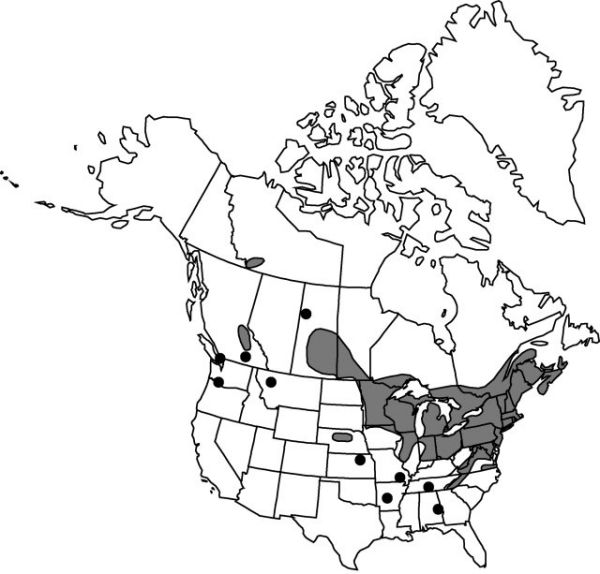Liparis loeselii
De Orchid. Eur., 38. 1817.
Plants 6–26 cm. Pseudobulbs ovoid, 10 × 5 mm, sheathed by bracts and persistent leaf bases, previous year’s pseudobulb usually present, connected by short rhizome. Stems pale green or yellowish green, angled, sometimes obscurely winged or fluted distally. Leaves 2; blade conduplicate, green, glossy, oblong-elliptic to elliptic-lanceolate, keeled abaxially, 3.7–18 × 1–4 cm, succulent, apex obtuse to subacute. Inflorescences 2–10 cm; floral bracts subulate, minute, 2 × 1 mm, apex acute; pedicels slender, 3–5 mm. Flowers 2–15, green or yellowish green to yellowish white or greenish white; dorsal sepal oblong-lanceolate to narrowly lanceolate, 4.5–6 × 1–2 mm, apex obtuse to acute; lateral sepals oblong-lanceolate to narrowly lanceolate, 4.5–5.5 × 1–2.2 mm, apex obtuse to acute; petals pendent, slightly curved, tubular, filiform, 4.5–5.5 × 0.5–1 mm, margins strongly revolute; lip translucent to opaque, green or yellowish green to yellowish white, obovate to oblong to suborbiculate, 4–5.5 × 2.2–3.5 mm, base narrowly cuneate, slightly auriculate, margins crenulate-wavy, apex subtruncate to obtuse, mucronate; disc with central elongate thickening; column short, stout, 2–3 × 0.5–1 mm, winged apically; anthers yellow; pollinia yellow. Capsules: pedicel 3–7 mm; body obovate to ellipsoid, 9–13 × 3–6 mm, veins often slightly winged. 2n = 32, 26.
Phenology: Flowering May–Aug.
Habitat: Cool, moist ravines, bogs, or fens, wet peaty or sandy meadows, and exposed sand along edges of lakes, often colonizing previously open and disturbed habitats during early and middle stages of reforestation
Elevation: 100–1100 m
Distribution

B.C., Man., N.B., N.W.T., N.S., Ont., P.E.I., Que., Sask., Ala., Ark., Conn., Del., Ill., Ind., Iowa, Kans., Ky., Maine, Md., Mass., Mich., Minn., Miss., Mo., Mont., Nebr., N.H., N.J., N.Y., N.C., Ohio, Pa., R.I., Tenn., Vt., Va., Wash., W.Va., Wis., w, c Europe.
Discussion
Liparis loeselii is such a small orchid that it can be easily overlooked; it may have a wider distribution than has been reported. Rain-assisted self-pollination in this species was described by P. M. Catling (1980).
Selected References
None.